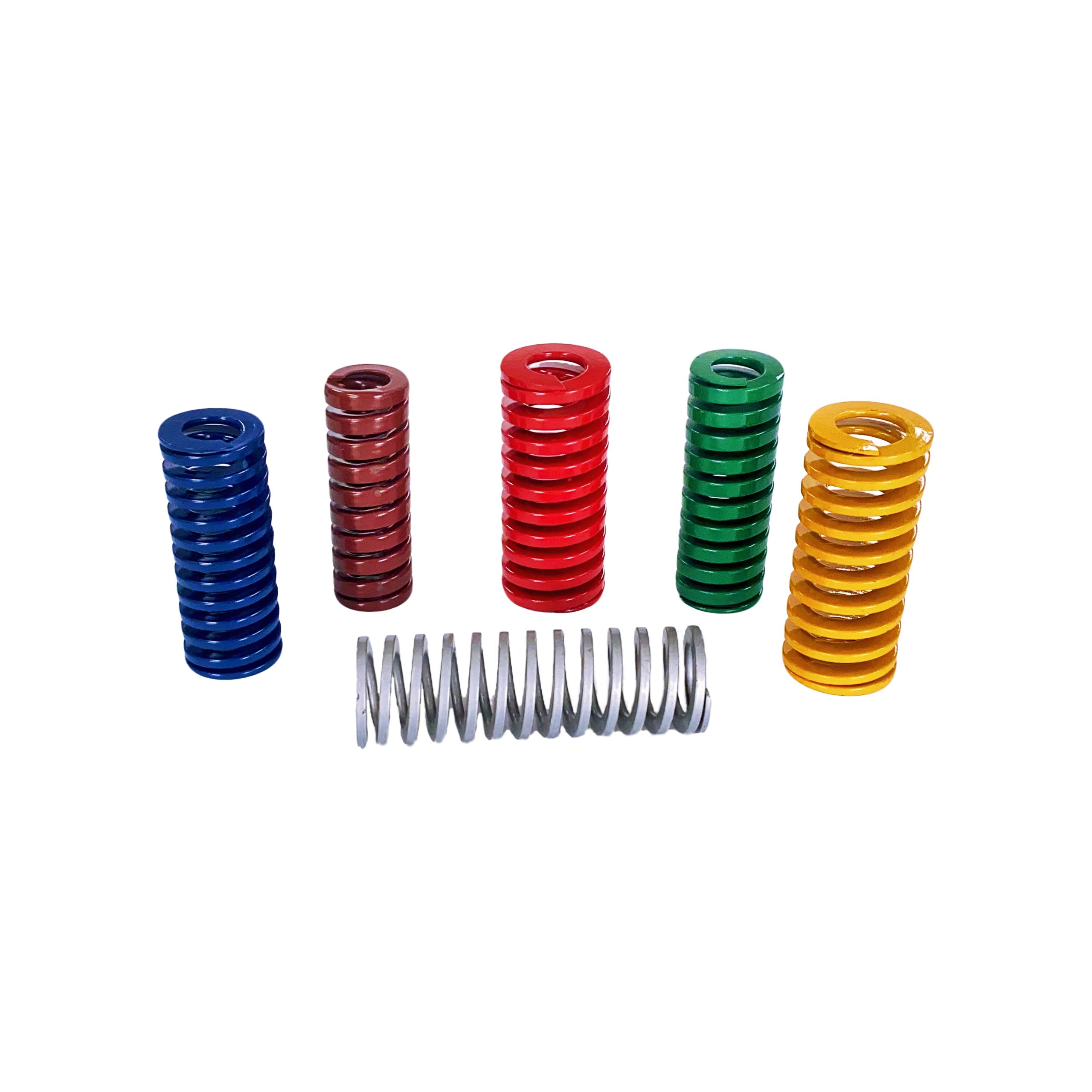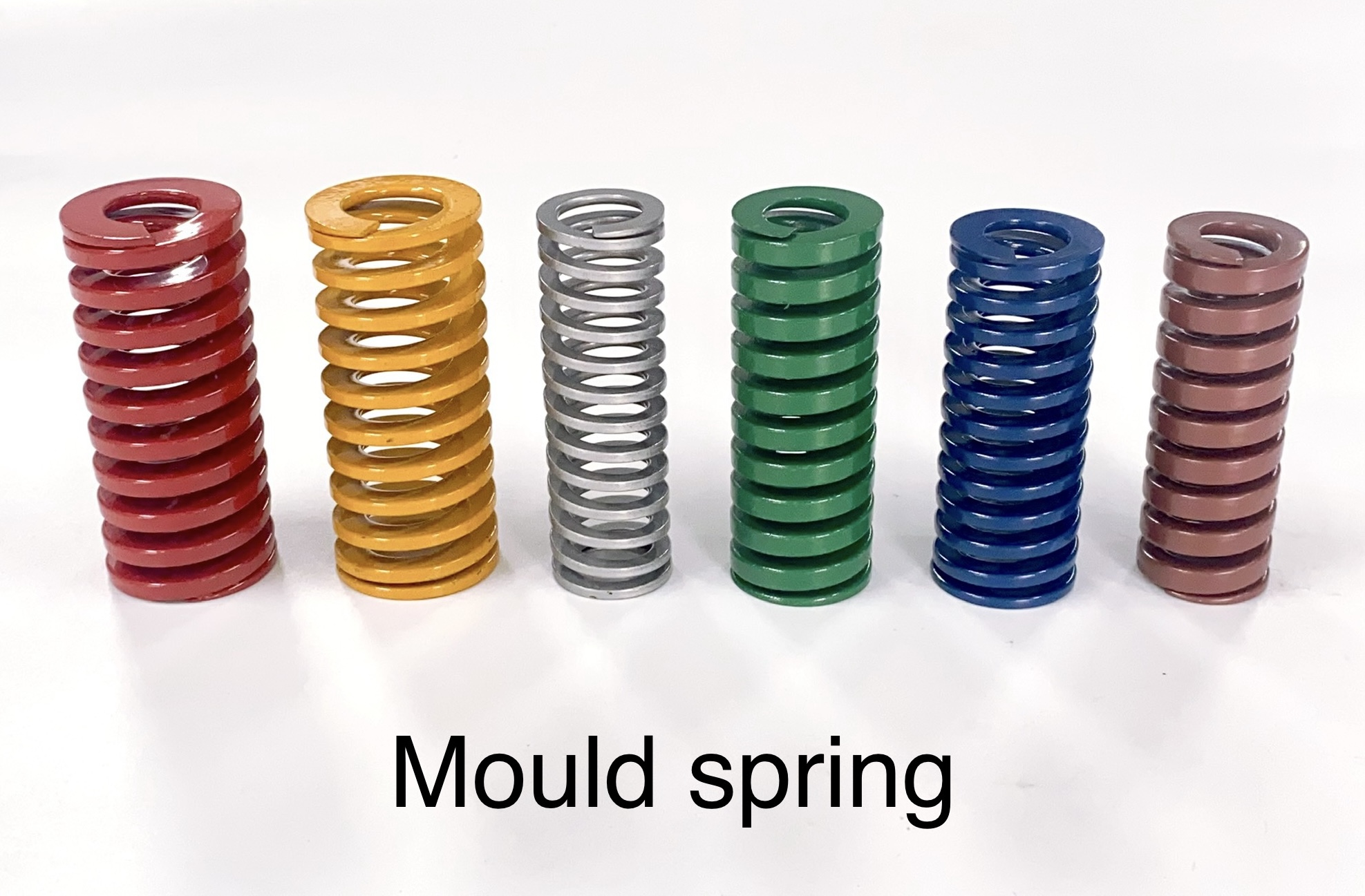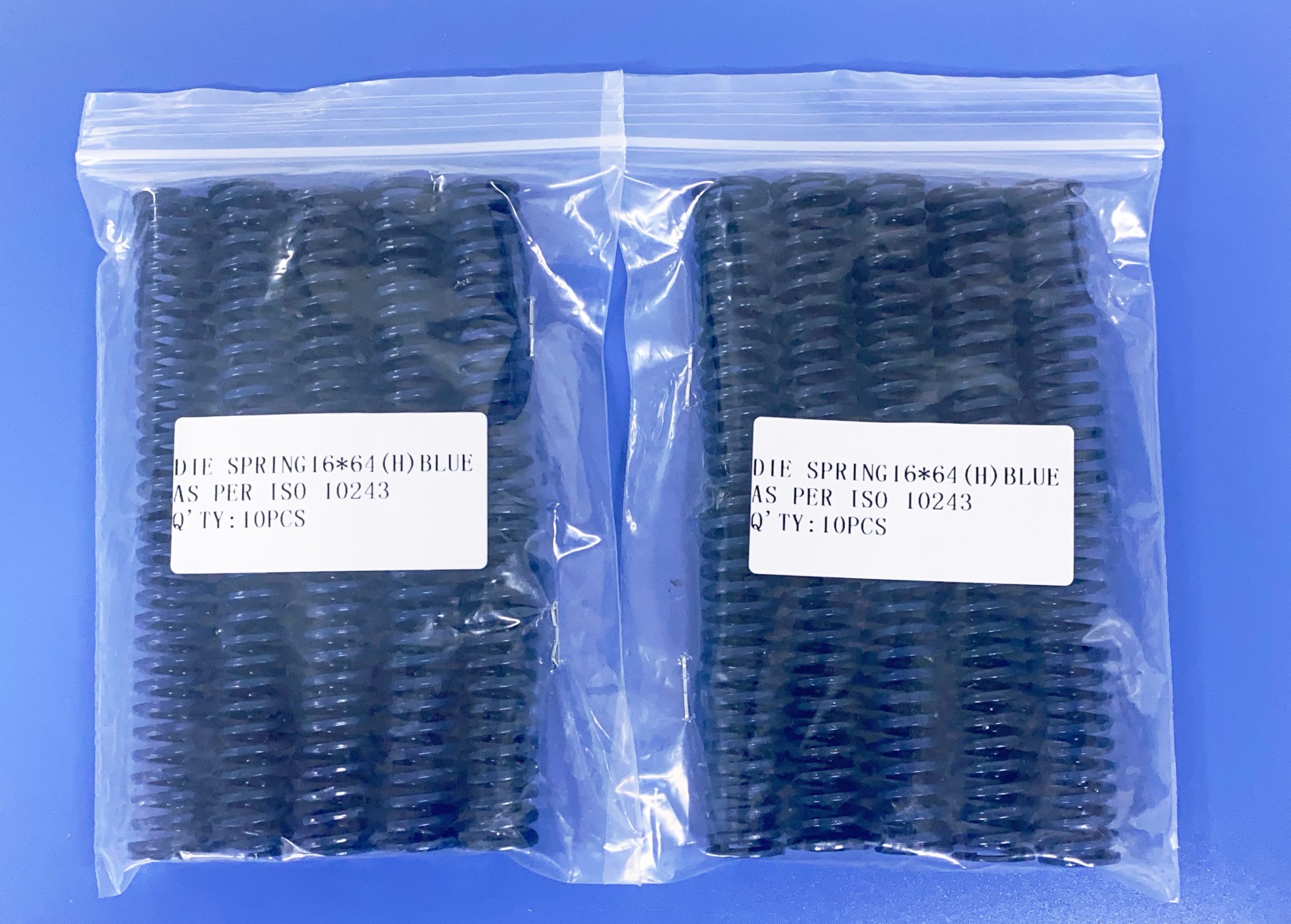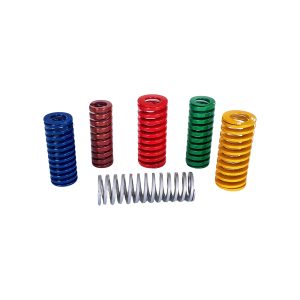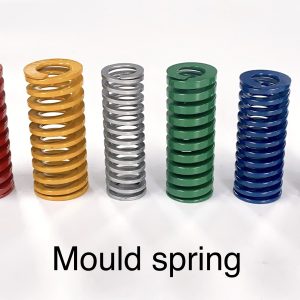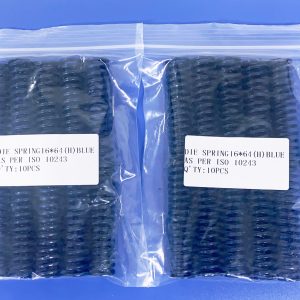Die Springs
Definition: Die springs are high-performance compression springs specifically designed for mold applications, featuring high load capacity, long service life, and stability. They are primarily used in ejection, stripping, and pressure mechanisms for stamping, injection molds, etc.
- Die Springs vs Standard Compression Springs
| Parameter | Die Springs | Standard Compression Springs |
| Material | Chrome silicon alloy steel (e.g., 50CrV) | Carbon steel or stainless steel |
| Life Cycle | 1 million+ cycles (high endurance) | Typically 100,000-500,000 cycles |
| Load Capacity | High (30-50% higher load for same size) | Relatively lower |
| Temp. Range | -30°C to +150°C (special models up to 250°C) | -20°C to +120°C |
| Color Coding | International color standards (e.g., red=heavy load) | Usually no color coding |
- Main Types (ISO Standard Classification)
- Light Duty (Yellow): Low load, suitable for small-stroke precision molds
- Medium Duty (Blue): Moderate load, most versatile
- Heavy Duty (Red): High load, for large stamping dies
- Extra Heavy Duty (Green/Brown): Extreme loads, specialized for automotive dies
- Key Performance Parameters
- Spring Rate (k): N/mm or kgf/mm
- Initial Tension: Preload retention force
- Maximum Deflection: Typically 40-50% of free length (30% for extra-long life types)
- Fatigue Life: Grades of 500K/1M/2M cycles
- Selection Procedure
- Determine required working load (consider impact factor 1.2-1.5)
- Calculate number of springs needed (total load/single spring capacity)
- Select stroke (working deflection ≤80% of max. allowable deflection)
- Verify installation space (OD/ID/free length)
- Special requirements: Corrosion resistance (nickel plating), high temp (special alloys)
- Common Failure Modes
- Premature Fracture:
✓ Cause: Eccentric mounting or insufficient guidance
✓ Solution: Add guide rods/bushings - Stiffness Degradation:
✓ Cause: Exceeding maximum deflection
✓ Solution: Upgrade to higher-spec springs - Corrosion Failure:
✓ Cause: Coolant erosion
✓ Solution: Use stainless steel material (e.g., SUS304)
- Maintenance Guidelines
- Regularly check free length (measure with calipers)
- Use springs from same batch in one mold
- Replacement criteria: 5% shortening of free length or visible cracks





Die Spring Die Spring Die Spring Die Springs Die Springs

